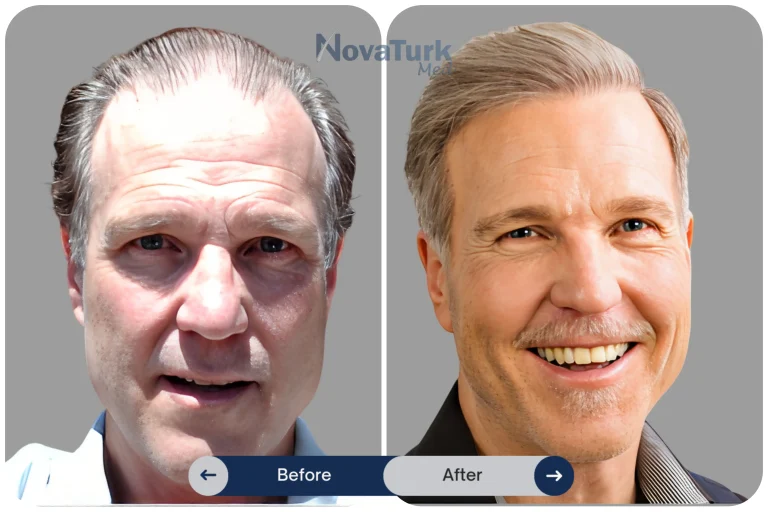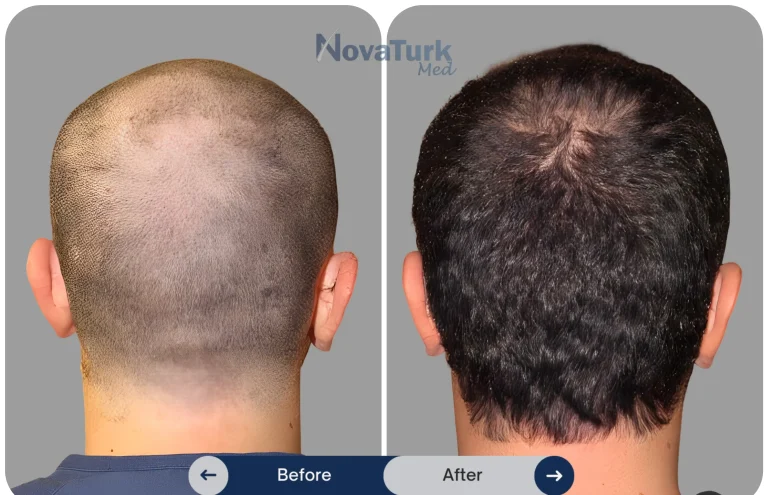
Second Hair Transplant: Everything You Need to Know:

Written by Jessy
Jessy is a Hair transplant doctor in Hungary with few high-impact publications in health issues and was awarded the “Best Women Medical Writer” in 2023 by the ABHRS.
Hair transplant surgery has become an increasingly popular solution for those experiencing hair loss. While many patients achieve satisfactory results with their initial procedure, some may consider a second hair transplant. This comprehensive guide will help you understand when and why a second hair transplant might be necessary, the process involved, and what to expect from the procedure.
Why Consider a Second Hair Transplant?
Several reasons might lead individuals to pursue a second hair transplant:
- Insufficient Density from the First Transplant: Some patients may not achieve their desired hair density with the first procedure. A second transplant can help add volume and thickness to the hair.
- Continued Hair Loss: Hair loss can continue after the first transplant, especially if the initial surgery was done at a younger age. A second procedure can address new areas of thinning or balding.
- Refining Previous Results: Sometimes, patients seek to refine or enhance the results of their first transplant to achieve a more natural look or to cover any areas that did not respond well initially.
- Scarring or Uneven Growth: In some cases, patients may experience scarring or uneven hair growth after their first transplant. A second procedure can correct these issues.
Evaluating Candidacy for a Second Hair Transplant
Before undergoing a second hair transplant, several factors must be evaluated to get the best out of hair transplant:
- Donor Area Assessment: The availability and quality of hair in the donor area are crucial. The donor area is typically the back or sides of the head, where hair is more resistant to balding. If there is not enough hair on the back of the head expert may extract hair from beard.
- Scalp Condition: The condition of the scalp, including the presence of scarring or skin elasticity, will influence the feasibility of a second transplant.
- Health Status: Overall health and any medical conditions should be considered. Certain health issues might affect the healing process or the success of the transplant.
- Hair Loss Pattern: Understanding the pattern and progression of hair loss is essential to plan the second transplant effectively.
The Second Hair Transplant Procedure
The procedure for a second hair transplant is similar to the first, though there are some differences and additional considerations:
- Consultation and Planning: A thorough consultation with a hair transplant specialist will determine the goals and expectations. The surgeon will assess the donor and recipient areas and discuss the best technique to use. At NovaTurk Med, our experts ensure a comprehensive evaluation to tailor the procedure to your specific needs. Our expert medical consultant offers a free consultation before your hair transplant to understand your expectations and assess any health issues.
- Harvesting Donor Hair: The hair for the transplant will be harvested from the donor area. Techniques include Follicular Unit Extraction (FUE) or Follicular Unit Transplantation (FUT). FUE involves extracting individual hair follicles, while FUT involves removing a strip of scalp and dissecting it into individual follicular units. NovaTurk Med specializes in both techniques, providing personalized recommendations for optimal results.
- Preparing the Recipient Area: The recipient area will be prepared by creating tiny incisions where the harvested follicles will be implanted. The placement of these incisions is crucial for achieving a natural look. NovaTurk Med utilizes advanced technology to ensure precision and natural hair growth patterns.
- Implanting Hair Follicles: The harvested hair follicles are carefully implanted into the recipient area. Precision is key to ensure the direction, angle, and density of the transplanted hair mimic natural hair growth. The skilled surgeons of NovaTurk Med excel in delivering aesthetically pleasing and natural-looking results. Check out our outstanding before and after results of hair transplants of our patients who got the desired outcomes.
- Post-Procedure Care: After the surgery, proper care and follow-up are essential. Patients will receive instructions on how to care for their scalp, manage discomfort, and promote healing. NovaTurk Med provides comprehensive post-operative care to support your recovery and ensure the success of your transplant.
Expectations and Recovery
Recovery from a second hair transplant is similar to the first:
- Immediate Post-Op Period: Patients may experience some swelling, redness, and discomfort in the donor and recipient areas. These symptoms typically subside within a week.
- Shedding Phase: Transplanted hair may shed within the first few weeks, which is a normal part of the process. New hair growth usually begins within three to four months.
- Final Results: Full results from the second hair transplant can take up to a year to become fully visible. Patience is essential during this period as the hair gradually thickens and takes on a natural appearance.
Conclusion
A second hair transplant can be a valuable option for individuals seeking to enhance the results of their initial procedure or address ongoing hair loss. By understanding the reasons for a second transplant, evaluating candidacy, and knowing what to expect from the procedure and recovery, patients can make informed decisions and achieve the best possible outcomes. Consulting with an experienced hair transplant specialist is crucial to ensure the success and satisfaction of the second hair transplant. For those considering hair transplant in Turkey, NovaTurk Med offers expert care and cutting-edge techniques to help you achieve your desired look.





